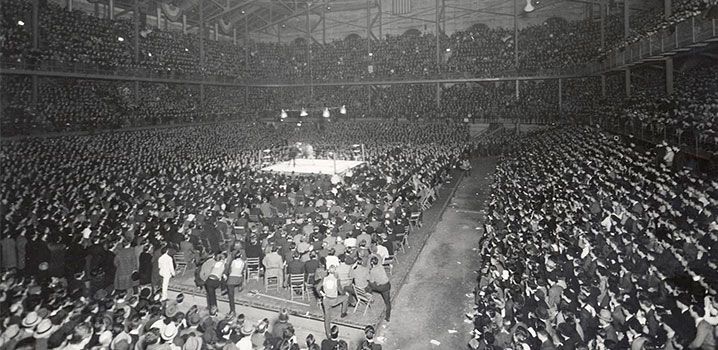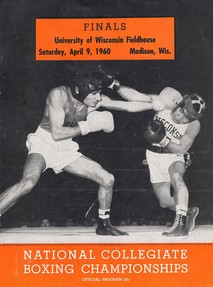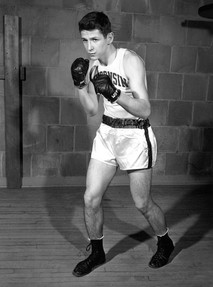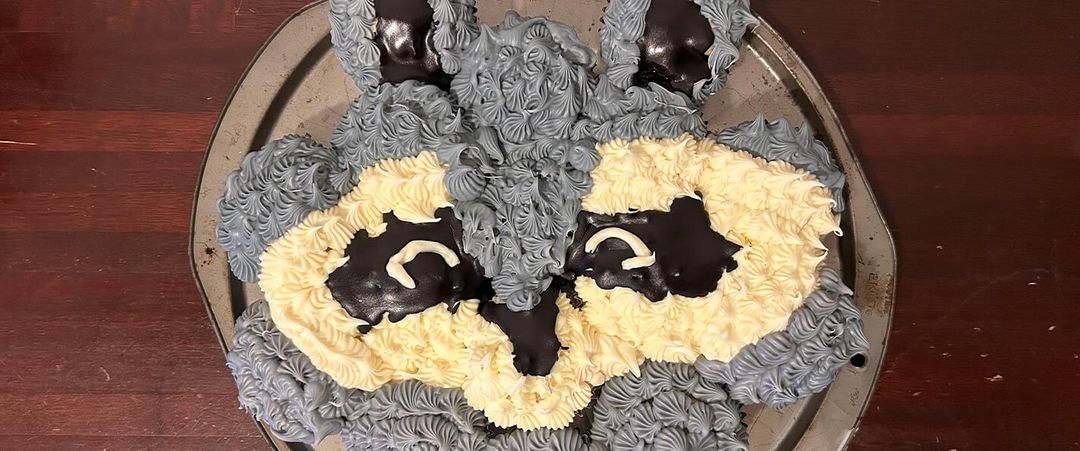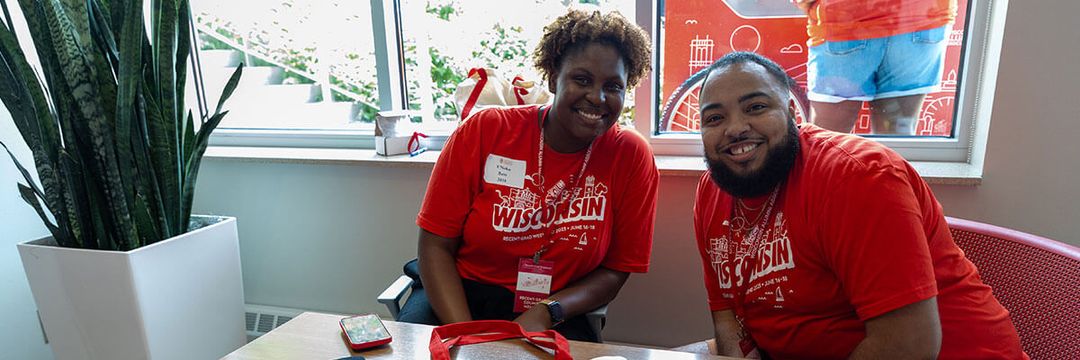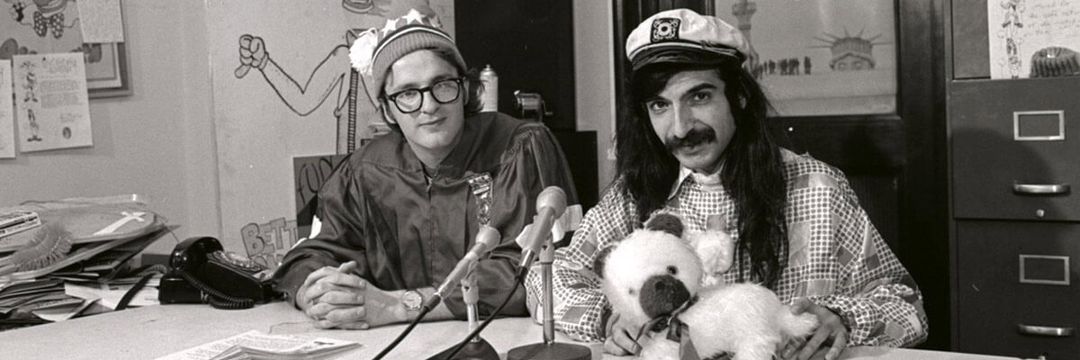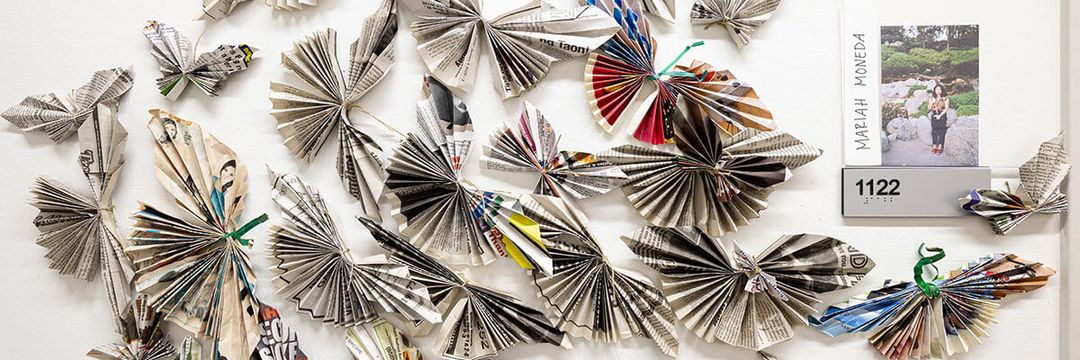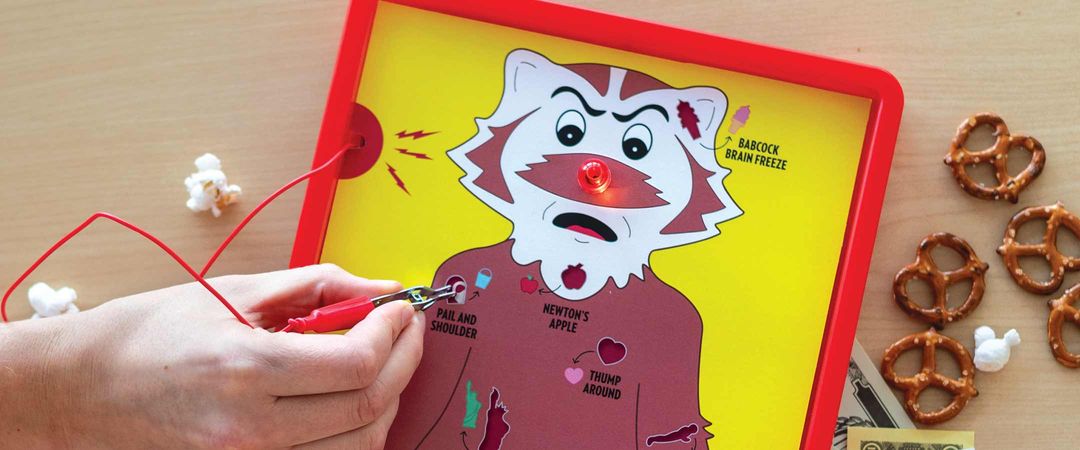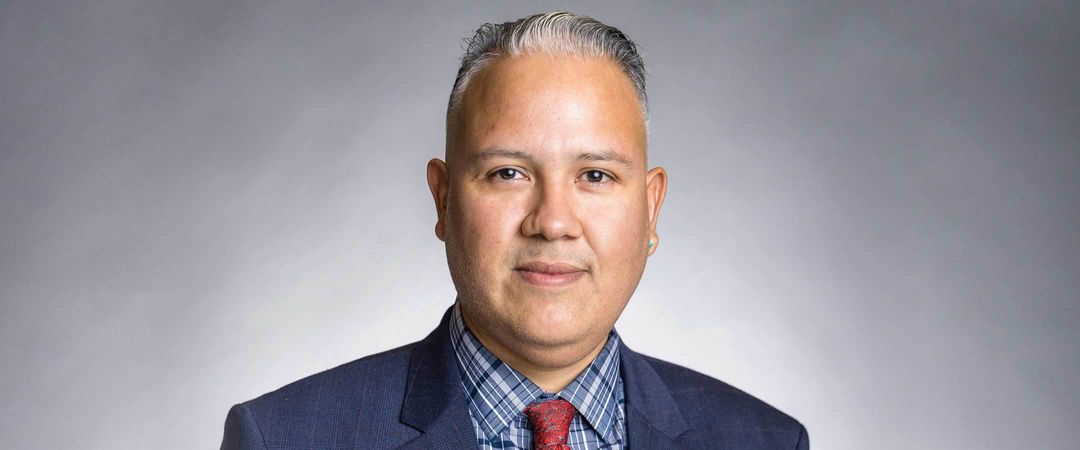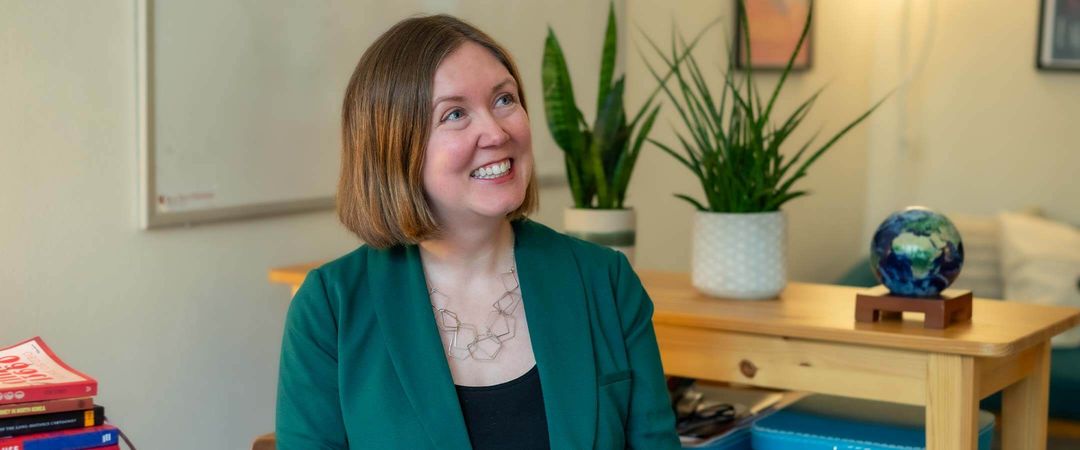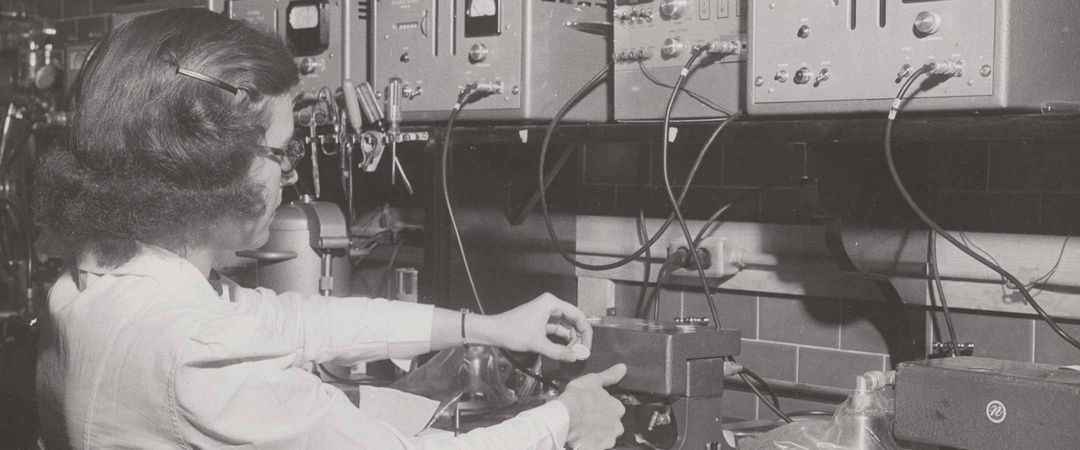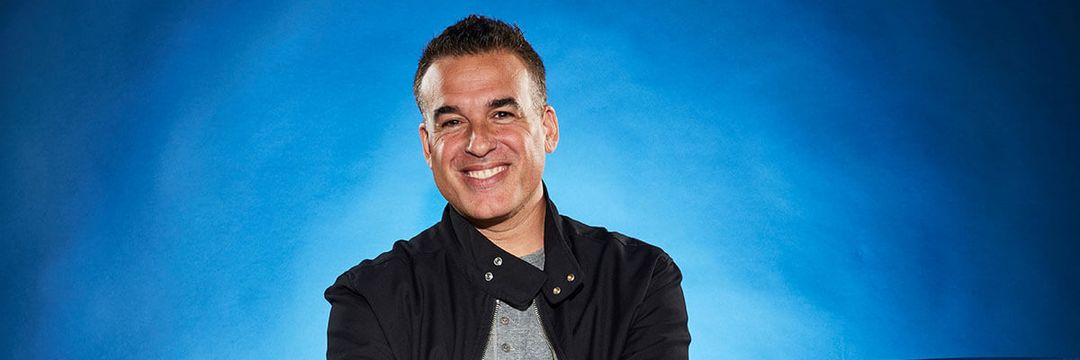This is not really a story about Chandler Davis x’16. But perhaps he’s the best place to begin.
Throughout the spring 2014 semester, Chandler, a UW undergraduate studying economics and Chinese, spent a fair amount of time balancing homework with interviews for Madison television stations, newspapers, and magazines. His claim to local fame? Launching – and maintaining – the first boxing club of any kind to be officially allowed on the UW campus in fifty-four years.
Fighting Back
Learn more about Chandler Davis x'16, the UW-Madison student who fought for more than a year to bring boxing back to campus in the Summer 2014 issue of On Wisconsin Magazine.
For Chandler, however, boxing was never about the publicity. As a teenager, he regularly traveled forty-five minutes from his Beverly Hills high school to train at a gym in East Los Angeles. If you ask Chandler why he likes boxing so much, he can’t really say. But the sport runs in the blood: Chandler’s father, Kevin Davis ’67, grew up boxing in Delavan, Wisconsin, and he joined an off-campus club during his own college years at the UW.
When Chandler came to visit campus, one of his top questions was where he could spar in his spare time. To his and Kevin’s astonishment, the answer was nowhere — at least nowhere on university grounds.
Chandler just figured boxing wasn’t as big of a deal in the Midwest as it was at home, so he decided to get an intramural club off the ground himself. He set about the task immediately after enrolling at the UW in fall 2012, and Kevin suggested he get in touch with his own former boxing trainer, Bob Lynch ’67, to see if he could help. Chandler did, and the three got together for dinner.
That night Chandler heard the name Charlie Mohr x’60 for the first time. And this brings us to what our story is really about: how the most popular UW sport of its day could disappear with one swift and terrible blow — and how big of a deal Chandler’s small boxing club just might be.
A Controversial Dynasty
According to UW Athletics records, the first boxing match on campus occurred in 1898. A well-known football player and eventual coach, John Richards, sparred against a heavyweight opponent in a hastily constructed ring outside of Music Hall. Richards won.
However, college boxing didn’t truly come to the fore until after World War I. The soldiers who sparred on military bases as part of their fitness training had become college students with a hobby. Elite Eastern universities were the first to establish teams, and boxing quickly spread nationwide, becoming a varsity sport at the UW in the early 1930s.
In 1934, administrators convinced a twenty-six-year-old boxer at the University of St. Thomas to relocate to Madison and become head coach of the Badger team. His name was John Walsh LLB’38, and he would go on to become college boxing’s equivalent of Barry Alvarez.
Under Walsh, UW boxing won eight NCAA national championships, starting in 1939. The Badgers also went unbeaten in nine seasons and didn’t suffer a home loss until 1945.
With the victories came public enthusiasm. “Frankly, I think the fact that they were so successful is what really got people excited about the sport here,” says Doug Moe ’79, the Wisconsin State Journal columnist who literally wrote the book on UW boxing — Lords of the Ring, which was recently optioned for a movie.
By the late 1940s, big-name boxing matches at the Wisconsin Field House were drawing crowds of almost 15,000, and the sport was second only to football in popularity. Despite the university’s efforts to encourage civility, fans established a boisterous reputation over the years. Boxing did not attract a “hoity-toity” crowd, Moe says. “When hockey started to get big in Madison, it was that crowd, the boxing crowd, that gravitated to [it].”
That rowdiness raised concerns. David Fellman, the professor of political science who would eventually play a starring role in college boxing’s downfall, was shocked by the temper of the boxing crowds, and the shock stuck with him until 1982, when he recounted to a UW historian his experience at a match. “[All] around me people were standing on their feet and screaming, ‘Kill him, kill him,’ ” he said. “And I said to myself that this is a heck of a college sport, where you shout, ‘Kill him, kill him.’ ”
Economics professor Walter Morton launched the first serious campaign against boxing at the UW in the mid-1940s. He was widely criticized, and his crusade merely resulted in a four-year athletics investigation that in 1953 ultimately found boxing safe enough to continue.
It was an outcome that would not fly a second time. “My objections to boxing wouldn’t have changed depending on what a study would turn up, because I thought it aesthetically and morally improper, too, as a college sport,” Fellman said.
Fellman was not alone in his sense of disgust. By the late 1950s, universities across the country were engaged in a full-fledged debate about whether boxing was an “appropriate” extracurricular
activity. The tawdry image of professional boxing, which was closely associated with organized crime, didn’t help. Several campuses, including many of the sport’s pioneering Eastern institutions, had already eliminated boxing, making it increasingly difficult for the remaining schools to schedule a full season of matches.
It was becoming clear to many insiders, including Walsh, that college boxing was on its knees. Yet no one imagined how painful it would be to watch the final blow.
The Last Haymaker
April 9, 1960, was a chilly night in Madison, the temperature hovering around freezing. Maybe that’s why attendance for the NCAA boxing championship was down that year. The crowd numbered just under 9,850.
It had been a tight tournament, and the last match would decide the champion: Wisconsin or San Jose State. The Badgers’ shot at a ninth title rested on the shoulders of a talented young boxer who was once considered a possible Olympic contender — and who was already carrying a heavy weight in his own mind.
Many accounts of Charlie Mohr include the descriptor “altar boy.” Originally from Merrick, New York, Mohr was coaxed into coming to Wisconsin on a boxing scholarship. He was well respected in the ring and well liked on campus, known for buying meals for the homeless, returning lost money, and even giving away his Golden Gloves ring to a teammate who admired it.
He was also unwell. Struggling with depression, Mohr had secretly been undergoing electroshock therapy, which had jumbled his memory and left him disoriented. In 2000, Jim Doherty ’61 interviewed former UW boxers for Smithsonian magazine and learned that Mohr had told several people he was becoming increasingly apprehensive about fighting and was ready for his boxing career to be over.
A teammate became so concerned about Mohr’s mental state that he approached then-coach Vernon Woodward ’38, MS’62, who had led the team since 1958 as Walsh’s hand-picked successor. After consulting with Walsh, Woodward decided to just let things play out with Mohr, a decision that later drew sharp criticism from boxing’s detractors.
On April 9, though, everything seemed fine. The match started off normally, with Mohr sparring against San Jose’s Stu Bartell. Both wore thickly padded gloves. Both wore headgear. Though the fight was close, it appeared Mohr had won the first of the anticipated three two-minute rounds.
In the second round, Bartell came out strong and delivered a powerful haymaker to the left side of Mohr’s forehead. The Badger went down. He got up, and seconds later, Bartell hit him again. This blow was not nearly as hard, but the referee ended the fight. Woodward and Walsh spoke briefly with Mohr. From the stands, Lynch and Doherty watched. Deeply disappointed, Mohr headed to the locker room, apologizing for his loss to those he passed along the way. He then lay down and began to seize.
The Aneurysm Myth
Mohr was rushed to the hospital and into surgery. Dr. Manucher Javid operated, but the Badger fighter slipped into a coma. Shortly thereafter, Javid discussed the procedure with prominent surgeon Dr. Anthony Curreri ’30 MA’31, MD’33, a former UW boxer with close connections to the NCAA boxing committee.
Curreri promptly told Walsh, along with several reporters, that Mohr had suffered from an aneurysm — a blood clot in the brain — that could have hemorrhaged anytime and was not necessarily linked to the fight.
But Curreri was never in the operating room with Mohr, and Javid has repeatedly said publicly that Curreri’s interpretation of Mohr’s injuries was “nonsense.” In actuality, the punch had ruptured a blood vessel in Mohr’s brain. The damage was most severe on the opposite side of his brain from the hit, a situation known as contrecoup.
However, over Javid’s protests, the aneurysm theory quickly gained traction among boxing supporters — and in the media. On April 12, Milwaukee Journal writer Evans Kirkby ’47 reported that, “Since Mohr did not appear to take an unusually hard beating in the ring, doctors have suggested that his blood vessels were more than normally susceptible to injury.” His language was similar to that used in many other articles published at the time.
For the next forty years, the question of whether Mohr was fatally hit or the victim of a pre-existing clot was the subject of debate, and one’s view on the matter often correlated with one’s
opinion about college boxing in general. Many who had boxed for Walsh adopted his view that Mohr had suffered an aneurysm unrelated to boxing, and some who had witnessed the fight firsthand
would swear later that they never saw the hit happen.
Walsh took the claim one step further. “Walsh, years later, would insist that Charlie Mohr was never knocked down, that he didn’t get hit hard enough,” Moe says. Complicating the situation is
another mystery: the official video records have gone missing. In 2000, Doherty discovered that the second round of the fight had been erased entirely from the NCAA’s copy of the footage.
Doherty thought the tape was lost forever, but a couple of years later, Moe managed to track down what he believes to be a copy of the UW’s version from Wisconsin Public Television. Though
the disappearance of the tape from the university’s archives raises questions, Moe says he doesn’t buy into the conspiracy theory that boxing supporters may have hidden or destroyed it.
Moe took the footage to Lynch’s house, where the two watched it together and realized the truth was unequivocal. “I had not had a real good perspective of [the fight] from where I
stood, so [the tape] clarified things for me,” says Lynch. “It made it real clear to me that Charlie was hit with a couple of good, solid punches.”
Lynch and Moe say the tape also shows clearly that Mohr went down after the first hit.
“It was chilling,” Moe says.
The Writing on the Placemat
In spite of Javid’s efforts, Mohr never regained consciousness, and after his death on April 17, the UW faculty acted swiftly. On April 29, the athletic board met to determine a recommendation
to the faculty. Woodward pleaded for patience, suggesting glove modifications and other ways to “clean up the sport.” At the end of the extremely contentious meeting, the board agreed to recommend that the faculty hold off on making any final decisions.
However, the academics had no interest in promises. They were ready for someone to take up the fight against boxing that Walter Morton had started seven years earlier.
Fellman, the political professor who once attended a match in the Field House, says he found himself involved in the boxing debate “quite by accident.” His daughter was a friend of Mohr’s, and both she and Fellman were upset by his death.
One afternoon, while eating lunch with fellow professors in Tripp Commons at the Memorial Union, Fellman began talking about Mohr. He recounted what happened next in his UW oral history:
“Somebody taunted me by saying, ‘Well look, why do you just sit there and talk? Why don’t you do something about it?’ And since I’m an activist by nature, that’s something no one must say to me,
because I can’t resist the temptation to rise to the challenge.
“So I said, ‘Well, I will.’ I took my placemat, turned it over, and I wrote a motion addressed to the Secretary of the Faculty abolishing boxing.” Fellman circulated the placemat around the Union to as many other “graybeards” as he could find and acquired enough signatures to move the motion forward.
On May 9, 1960, more than 500 people gathered to hear the faculty’s verdict on the future of boxing on campus. To accommodate the crowd, the meeting was held in Music Hall. Fellman submitted his motion and spoke very briefly.Then, not far from the very spot where the first-ever UW boxing match was held, the faculty voted to discontinue it as an intercollegiate sport.
Boxing supporters did not speak.
The UW became the most symbolic domino to fall in what quickly became a cascade of university boxing bans. It took only a year after the UW ban for the NCAA to discontinue boxing entirely because so many schools had abandoned it.
As for Fellman: he had a difficult time in the immediate aftermath of the faculty vote and said “the jocks” never forgave him. Yet he didn’t regret the outcome of the vote — only the notoriety
of his association with it.
“I’m mortified at the thought that my reputation will depend on the fact that I made the motion to kill boxing,” he said. “I didn’t think it was all that important.”
Fighting Back
Almost immediately after the ban, some boxing supporters tried to keep an intramural club going on campus, but administrators quickly cracked down and did so again when Lynch took a group wearing UW colors to a collegiate competition in the 1990s. It appeared the sport was gone for good.
Then Chandler arrived.
After investigating in the university’s archives, Chandler realized the 1960 intercollegiate ban did not technically extend to club sports. Chandler says that thanks to Lynch’s insights about the reaction to Mohr’s death, he and a couple of other students were able to develop a proposal for a club that emphasized self-defense and exercise — much like a martial-arts club — instead of competitive fighting. After almost a year of petitions, paperwork, and presentations, Chandler won approval from the Division of Recreational Sports in December 2013.
In the new club, the only students who are allowed to spar are those who seek certification from a national boxing organization, and Chandler stresses that sparring will always be optional. This approach has attracted a handful of female students among the almost 45 dues-paying members.
Though a gracious interview subject, Chandler seems ready to turn his attention from the media’s spotlight on the club, which surprised him, and just get back to the gym.
“I wanted boxing to be fun,” he says. “I would like to relax and enjoy it.”
For one of the last local witnesses of the 1960 championship, though, the new club means something more. “I’m pleased to see that [boxing has] an honest opportunity now, 54 years after it was set aside,” says Lynch.
